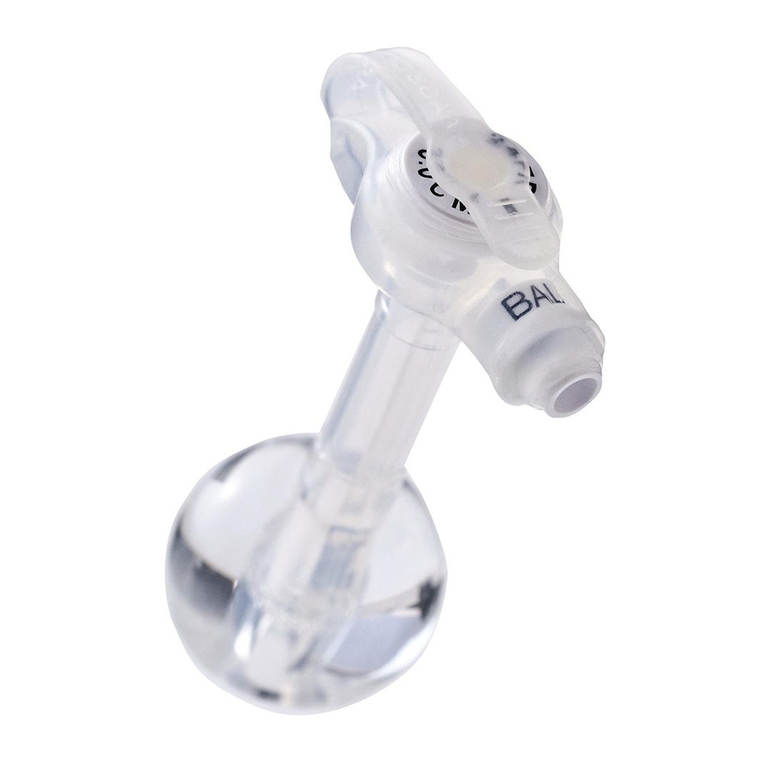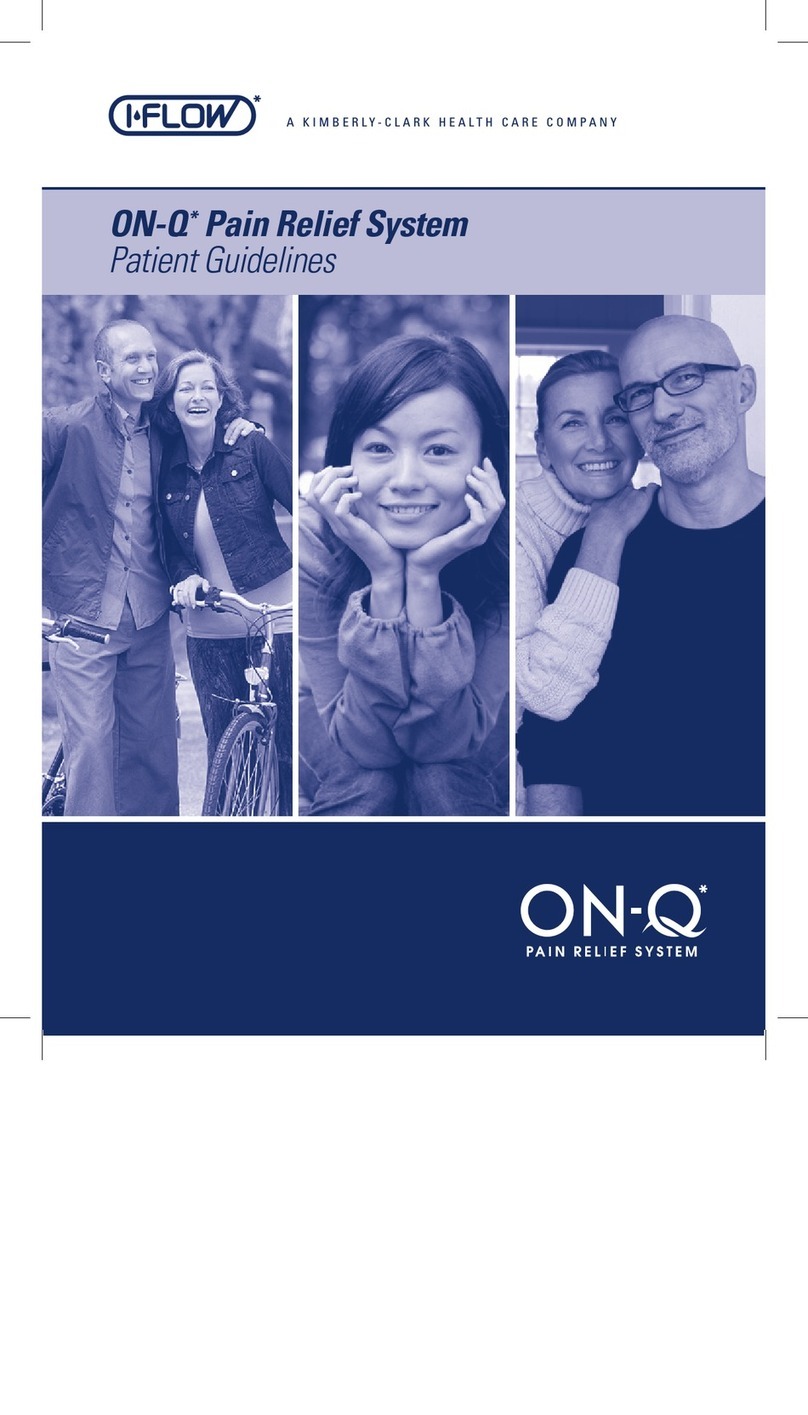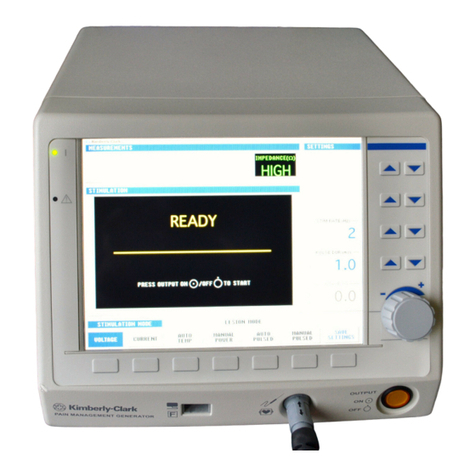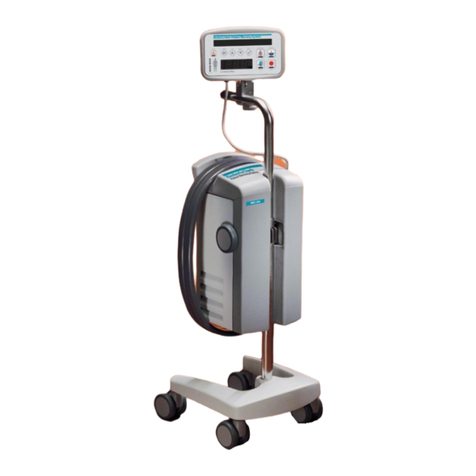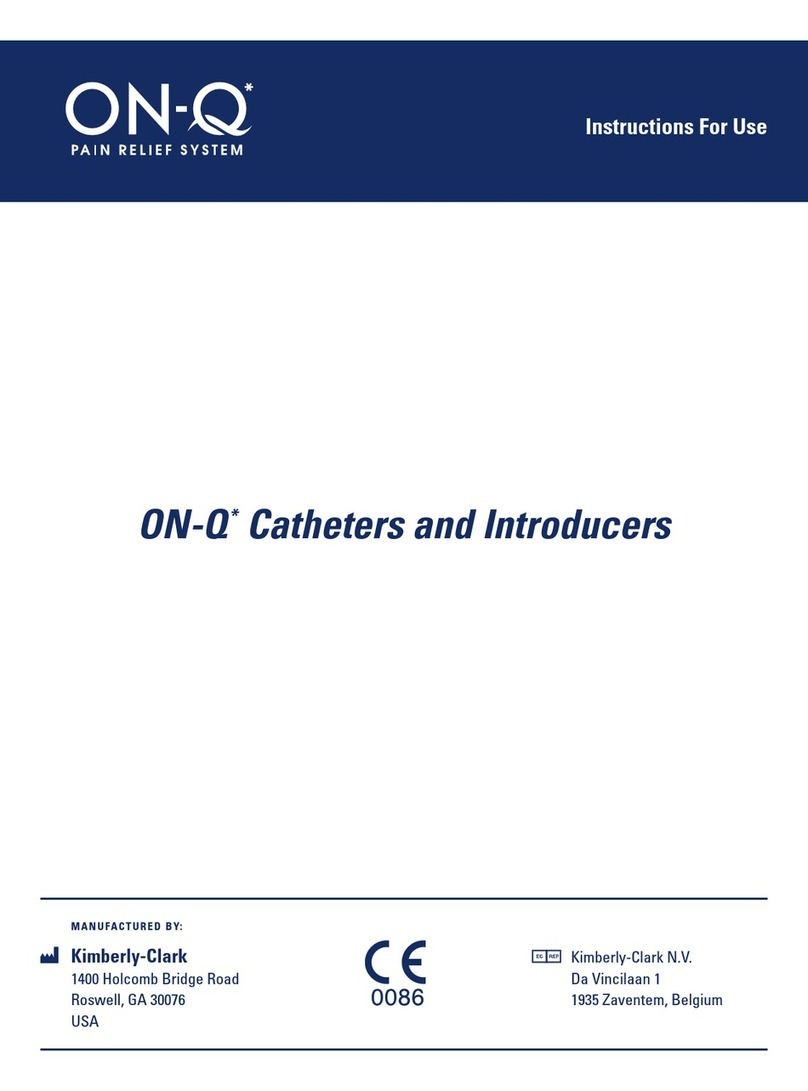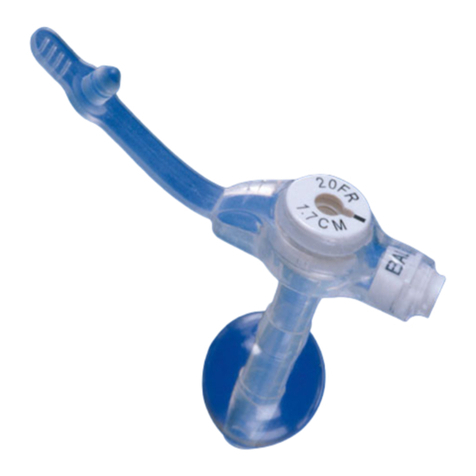MIC-KEY*Low-Profile Transgastric-Jejunal Feeding Tube
ENDOSCOPIC/RADIOLOGICAL PLACEMENT
DIRECTIONS FOR USE
Disposable, for single patient use only. Do not resterilize.
PRODUCT DESCRIPTION
The MIC-KEY Low-Profile Transgastric-Jejunal Feeding Tube is a single unit
feeding/drainage device (Fig. A). It enters the stomach through a gastric
stoma.
The tube is held in place (within the stoma tract) by means of a water filled
balloon (Fig. A-1) and a low-profile external bolster (Fig. A-2). The external
bolster contains two ports; one labeled “JEJUNAL” and one labeled “GAS-
TRIC”. Incorporated within each port is a one-way valve which is opened by
attaching the appropriate MIC-KEY Extension Set.
MIC-KEY Extension Sets (Figs. B & C) connect to the feeding and drainage
ports. The JEJUNAL port is used for feeding into the small intestine. The
GASTRIC port is used to drain the stomach with the use of low suction or
gravity drainage and to administer medications. Athird port labeled BAL is
used to fill and remove fluid from the balloon.
INDICATIONS FOR USE
The use of this tube is clinically indicated when simultaneous gastric
decompression and jejunal feeding are needed.
FOR ENTERAL NUTRITION ONLY
PLACEMENT OF THE MIC-KEY* TRANSGASTRIC-JEJUNAL
FEEDING TUBE
Endoscopic or fluoroscopic placement of the MIC-KEY Transgastric-Jejunal
Feeding Tube is intended for patients with an established gastrostomy tract.
Be sure the stoma has been measured properly and you have the proper
tube size and length before beginning the placement procedure. The length
of the tube should be sufficient to be placed 10–15 cm beyond the Ligament
of Treitz.
STOMA MEASURING PROCEDURE
Use the MIC-KEY* Stoma Measuring Device (Fig. D) to find the depth of the
gastrostomy stoma. The shaft length is the distance in centimeters between
the bottom of the external bolster and the proximal balloon surface when the
balloon is filled to 5 ml.
1. Moisten the tip of the measuring device with water-soluble lubricant or
water.
2. While the patient is in an upright position, insert the device through the
stoma into the stomach. DO NOT USE FORCE.
3. Fill the balloon with 5 ml distilled or sterile water.
4. Gently pull up on the Stoma Measuring Device until you feel resistance
against the inside stomach wall.
5. Slide the plastic disc down to the stoma.
6. Read the mark above the plastic disc. This adds 1 to 2 millimeters to the
exact measurement. This much vertical movement is considered optimal.
7. Repeat steps 4 through 6 with the patient in the supine position.
8. Take an average of the two readings. This is the desired length.
9. Record the measured centimeter shaft length on the MIC-KEY
Transgastric-Jejunal Feeding Tube Patient Information Record.
10. Remove water from the balloon and remove the device.
ENDOSCOPIC PLACEMENT THROUGH AN EXISTING
GASTROSTOMY TRACT
WARNING: DO NOT USE MINERAL OIL OR PETROLEUM PRODUCTS
This kit does not contain a guidewire.
1. Remove the MIC-KEY Transgastric-Jejunal tube from the package and fill
the balloon with 5 ml water using the 6 ml luer slip-tip syringe. The bal-
loon should be symmetrical and should not leak. The silicone may adhere
to itself causing the balloon to partially fill. If this occurs, roll and bend the
balloon with your fingers until the balloon is round. Remove water from
the balloon.
2. Using the 6 cc luer slip-tip syringe, instill water into the gastric
decompression port and jejunal feeding port to confirm tube patency.
3. Perform standard flexible gastroscopy. Insufflation of the stomach
facilitates tube placement.
4. Withdraw the endoscope until the indwelling gastrostomy tube is in the
visual field.
5. Remove the gastrostomy tube.
6. Lubricate the distal end of the MIC-KEY Transgastric-Jejunal Tube and
insert it into the stoma.
7. Grasp the end of the tube with an atraumatic forceps. If needed, use a
floppy-tip guidewire or stylet to stiffen the tube. Protect the anti-reflux
valve by placing the introducer cannula (Fig. E) into the jejunal feeding
port before you insert the guidewire or stylet.
8. Feed the tube through the pylorus and through the upper duodenum.
Continue to advance the tube using the forceps until the tip of the tube is
positioned 10–15 cm beyond the Ligament of Treitz and the balloon is
inside the stomach.
9. Release the tube and withdraw endoscope and forceps.
10. Ensure the external bolster is flush with the skin surface. Fill the balloon:
•For pediatric sized tubes (REF numbers ending in –15, –22, or –30), fill
the balloon with 3–5 ml distilled or sterile water. DO NOT EXCEED 5 cc
TOTAL BALLOON VOLUME. DO NOT USE AIR. DO NOT INJECT
CONTRAST INTO THE BALLOON.
•For adult sized tubes (REF numbers ending in –45), fill the balloon
with 7–10 ml distilled or sterile water. DO NOT EXCEED 10 cc
TOTAL BALLOON VOLUME. DO NOT USE AIR. DO NOT INJECT
CONTRAST INTO THE BALLOON.
11. Remove any introducer cannula and guidewire used.
12. Flush the tube to confirm patency.
13. To avoid potential placement complications (e.g., bowel irritation or
perforation), ensure the tube is not looped within the stomach or small
bowel. Verify proper tube placement radiographically.
THE JEJUNAL PORTION OF THE TUBE CONTAINS
TUNGSTEN WHICH IS RADIOPAQUE AND CAN BE USED
TO RADIOGRAPHICALLY CONFIRM TUBE POSITION.
FLUOROSCOPIC PLACEMENT THROUGH AN EXISTING
GASTROSTOMY TRACT
To perform this procedure, obtain the following additional supplies:
•.035 Floppy-Tipped (atraumatic) Guidewire
• Water soluble lubricant
1. Remove the MIC-KEY Transgastric-Jejunal tube from the package and
fill the balloon with 5 ml water or sterile water using the 6 ml luer slip-tip
syringe. If the balloon is asymmetrical, roll it between your fingers and
squeeze it gently until the balloon is round. Remove water from the
balloon.
2. Using the 6 cc luer slip-tip syringe, instill water into the gastric decom-
pression port and jejunal feeding port to confirm tube patency.
3. Under fluoroscopic guidance, insert a floppy-tipped (atraumatic)
guidewire through the indwelling gastrostomy tube.
4. Remove the gastrostomy tube over the wire.
5. Advance the guidewire until the tip is at the pylorus.
6. Negotiate the pylorus and advance the guidewire into the duodenum.
7. Advance the guidewire tip to a point 10–15 cm beyond the Ligament of
Treitz.
8. Using the 6 cc syringe, instill water into the jejunal feeding port and
flush the entire tube length with water. Lubricate the distal portion of the
MIC-KEY Transgastric-Jejunal tube with a water soluble lubricant.
9. Insert the Introducer Cannula (Fig. E) into the jejunal feeding port until
the Introducer hub is in contact with the jejunal feeding port and the intro-
ducer cannula is visible inside the tube. The introducer cannula opens the
one-way valve and protects it from damage by the guidewire.
